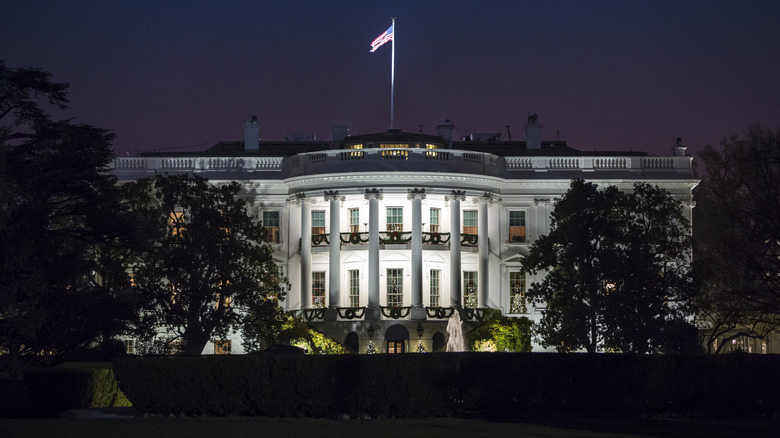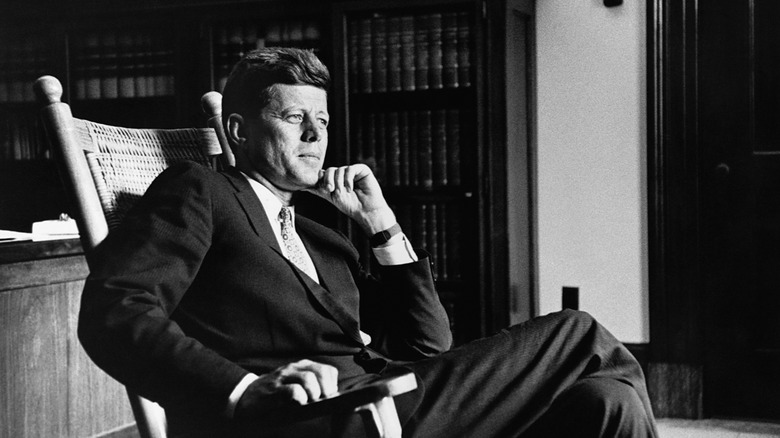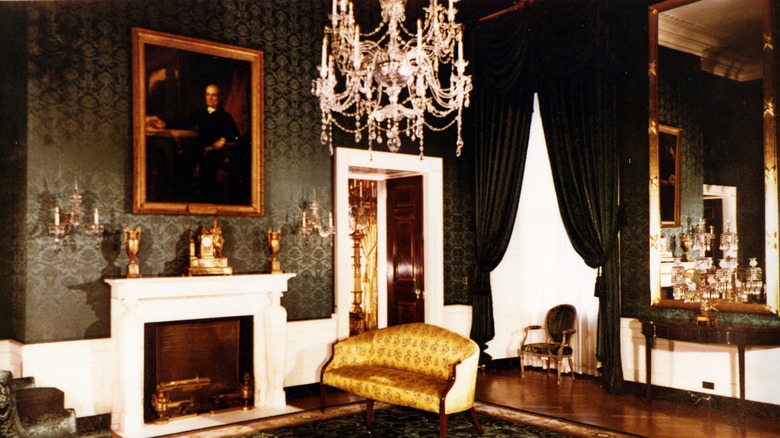Who Owns The White House?
Technically speaking, the White House belongs to the federal government — America's most famous office building is owned by the National Park Service and designated a National Historic Landmark and National Park. But the building and its grounds are open to the public, albeit with a high level of security, and many believe it belongs to the people. This notion has been popular since the 19th century. For many, the building is a symbol of democracy, and it has always been open for public meetings and events — the various presidents who camp out there are merely America's bad tenants. Whenever a new head of state moves in, they are given a sum of money to care for the building on behalf of the nation.
Although the National Park Service is relatively new, the building's status as a gift to democracy goes all the way back to the founding fathers, one of many presents given to the U.S. by George Washington. A boon to history lovers, no other country in the world lets its citizens tour the head of state's residence in the same way.
Washington's gift to Washington
The public nature of the White House arguably goes back to its very foundation. George Washington selected the location, and architect James Hoban was responsible for its construction. The first president did not actually live in the building, but he did use it as a public meeting place and place of celebration. Every year Washington held parties at the White House for the Fourth of July and New Year. Ever since then presidents have made an effort to welcome visitors and congressmen alike.
In 1961, under the Kennedy administration, Congress officially declared the building a museum. One reason for the passing of this legislation was to prevent sticky-fingered residents from carting off objects of historic interest that have been donated or accumulated in the building over the centuries. According to Ryan William's "The White House: An Architectural History," Kennedy also didn't want to place arbitrary restrictions on the building by declaring it a monument. By making it a museum, the National Park Service was given a license to protect the building, raise funds to sustain it, and create educational materials for eager guests. Thus the public nature of the White House was enshrined in law.
Presidents as caretakers
Presidents live busy lives, but that doesn't mean they can opt out of DIY. Each new incumbent is awarded an allowance by Congress, and they use the money to replace worn-out furnishings and make structural repairs. The size of this budget has grown steadily with inflation, rising from the $14,000 given to John Adams to the $100,000 given to Bill Clinton (per White House History). In effect, presidents are paid by the state to redecorate. A few presidents and first ladies have gone a little overboard with their spending to do this, and several presidents — Barack Obama and Ronald Reagan — refused the fund and used their own money.
Given that the building is technically a museum, there are a few rules politicians must follow while redecorating. The couple must consult the Committee for the Preservation of the White House, established by Lyndon B. Johnson in 1964. While not enshrined in law, there are some obvious taboos that should not be broken — the White House should stay white for example, and the Green Room green. Presidents are free to add to the building in all sorts of ways, however — Kennedy built a swimming pool, and Richard Nixon installed a bowling alley.


